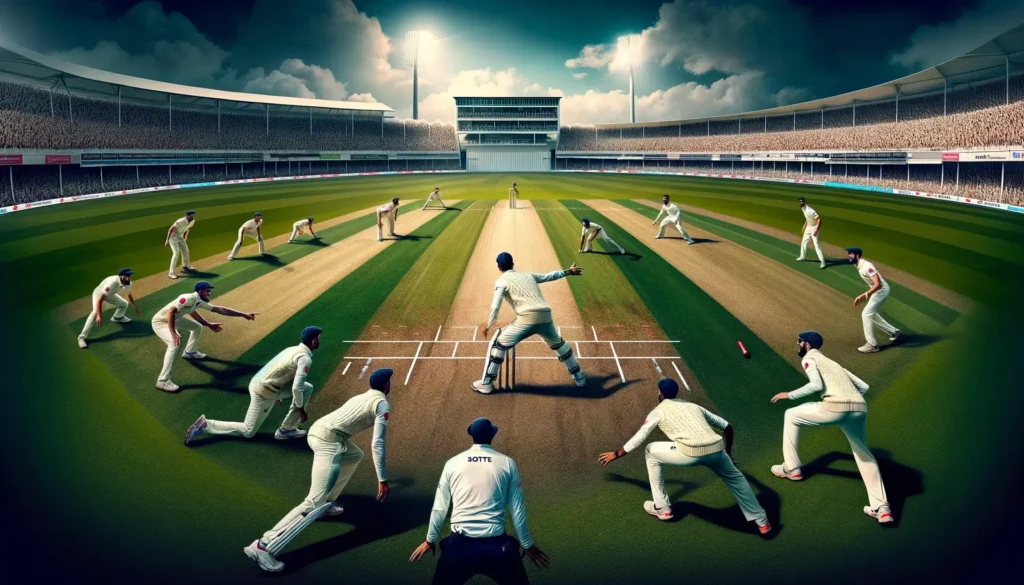What is bazball in cricket sports: In the dynamic world of cricket, a new term has been making waves, Bazball. Named after England’s coach Brendon McCullum,
this approach is redefining how the England cricket team plays, especially in Test-cricket and the Ashes series.
But what exactly is Bazball, and why is it causing such a stir in the cricket community?
This article focus deeply into the origins, tactics, and impact of Bazball, offering an insightful look at one of the most talked-about strategies in recent cricket history.
Whether you’re a seasoned cricket fan or new to the sport, this piece promises a fascinating exploration of a game-changing approach.
What Exactly is Bazball?
Bazball refers to the ultra-aggressive batting style England have embraced under new coach Brendon McCullum. It involves attacking at all costs, regardless of match situation.
The mentality is to go for victory no matter how unlikely it seems. This means taking risks and playing very positively even when defending a total. It’s an all-out offensive approach.

Where Did The Term Bazball Come From?
The term was coined by the English media in mid-2022. It’s derived from coach McCullum’s nickname “Baz”. He was known for his aggressive batting as New Zealand captain.
The “ball” part refers to McCullum bringing this bold attitude to the England team. So Baz + ball = bazball!
What Are Some Examples of Bazball In Action?
Some matches that show bazball in action:
- England chased 299 in the 4th-innings to beat New Zealand. This was the highest 4th-innings total ever chased in test history.
- England scored 377/10 on day 5 to beat India. They played aggressively despite only having a lead of 259 runs.
- England declared their 1st-innings at 544/6 after just 75 overs against South Africa. Bazball means always trying to force the pace.
Has Bazball Been Successful For England?
Yes, bazball has produced great results so far. Under coach McCullum, England have won 6 out of 7 tests since June 2022. This includes series wins over New Zealand and South Africa.
England’s new aggressive approach has seen them chase down intimidating 4th innings totals. They’ve also frequently scored at over 5 runs per over in tests.
However, some criticize bazball as being risky and overly aggressive. Only time will tell if it’s sustainable long-term against top teams like India and Australia.
What Tactics Are Used in Bazball?
Some key bazball tactics England use:
- Attacking-batting even when defending in the 4th innings. Keeping an high run rate rather than trying to block out for a draw.
- Aggressive declarations to give their teams time to dismiss the opposition twice. Declaring giving the opponent a chance to win.
- Attacking fields with most fielders in catching positions. Using agressive bowling strategies.
- Hitting out at any ball that’s even slightly loose. Taking risks by hitting over the top and across the line.
- Using unorthodox shots like reverse sweeps and scoops during the opening overs. Being ultra-aggressive from ball one.

Where Did Bazball Originate From?
Although England have made bazball famous, some trace its origins further back. Former New Zealand captain Brendon McCullum was known for his aggressive style years before coaching England.
Under McCullum’s captaincy, New Zealand won tests by playing attacking cricket. This included high run rates and bold declarations.
So while the ‘bazball’ term is new, the underlying mindset existed in McCullum’s New Zealand team earlier. He’s now brought that same positive mentality to transform England’s test approach.
What Was Cricket Like Before Bazball?
Before bazball, test cricket generally involved more cautious-batting. Batsmen were less willing to take risks, and attacking shots were played selectively.
There was more emphasis on occupying the crease for long periods and wearing down Teams. Draws were common results.
Scoring rates were lower, declarations were generally later, and fourth innings chases above 250 were rare. Teams prioritized minimizing risk and holding onto their wickets.
Is Bazball Better Than Previous Styles of Test Cricket?
Opinion remains divided on whether bazball will improve test-cricket in the long run.
Supporters say it makes for more exciting play. Matches have more twists and aggressive batting rewards skill. Draws will become rare.
Critics argue it could produce more unsporting collapses and uneven contests. They feel conservative test-cricket is being sacrificed for entertainment.
The truth likely lies somewhere in between. Bazball has re-energized test cricket and produced some thrillers. But stars like Virat Kohli have questioned if it will work against all top teams. Time will tell if this ultra-aggressive cricket is a boon or bane for tests.
What Are The Risks of Playing Bazball For Teams?
While bazball has brought England wins, its high-risk approach has potential downsides:
- More batting-collapses are likely when batsmen throw caution to the wind.
- Bowlers may become ineffective if declaring too early doesn’t leave enough time to bowl teams out twice.
- Mental fatigue from playing such a high-intensity style may take a toll on players.
- England’s success may tempt other teams to play recklessly beyond their abilities.
The biggest risk is that on unresponsive pitches against world-class bowling attacks, bazball could backfire badly. Time will tell if any weaknesses of bazball are exposed.
How Have other and former New Zealand Cricket Stars Reacted to Bazball?
Virat Kohli: “I don’t think this style can be sustained for too long … it has to be a team decision.”
Steve Waugh: “It’s exciting to watch, but high-risk too. England could crash and burn.”
Shane Warne: “I love the intent and attack from England. It’s entertaining for fans. But I worry bowlers may become obsolete.”
Jacques Kallis: “Bazball won’t work everywhere. On flat wickets, England could be chasing huge fourth innings totals.”
So while many enjoy England’s new brand of cricket, experts worry it could negatively impact long-term test match quality if widely adopted.
Key Figures in Bazball: Brendon McCullum and Ben Stokes
Two central figures in the Bazball narrative are Brendon McCullum and Ben Stokes, the England Test captain. McCullum’s coaching philosophy, combined with Stokes’ bold captaincy, has been instrumental in shaping this new approach.
Their leadership styles, both characterized by a willingness to take risks and back their players, have cultivated a team environment where aggression and innovation are not just encouraged but celebrated.

Conclusion –what is bazball in cricket sports?
As England aim for 2023 World Cup success, it will be interesting to see if captain Ben Stokes and head coach Brendon McCullum adopt bazball in white-ball cricket too.
While ultra-aggression has brought England test wins, it may be risky in limited overs. As former cricketer Joe Root said, “really like that silly term.”
England will likely need balance between caution and aggression in World Cups. The coming year should reveal if bazball is a lasting successful strategy across formats or a test cricket fad. Now its clear to all about What is bazball in cricket sports.
FAQs – What is bazball in cricket sports
Q: How was former New Zealand captain Brendon McCullum known for his aggressive batting style?
A: As a player, McCullum was known for his aggressive stroke play and positive approach. He scored quickly and took on bowlers. Now as England coach, he is instilling the same attacking mentality.
Q: What is the highest 4th innings run chase in Test cricket history?
A: England’s 299/5 to beat New Zealand at Headingley in 2022 is the highest 4th innings successful run chase ever in Test matches.
Q: How does bazball impact the role of bowlers in Test cricket?
A: Bazball’s aggressive batting approach often puts bowlers under pressure. Bowlers have found it challenging to contain as England look to score quickly and attack at all times under coach McCullum.
Q: Could bazball potentially lead to more draws in Test cricket?
A: Unlikely, since bazball prioritizes always going for the win regardless of the match situation.

Mark Wilson is a sports writer who loves to share stories about different sports like baseball and soccer. He grew up in Chicago, USA, and always enjoyed watching and playing sports.





